Place
ContributeIn the 1860s the River Torrens in Adelaide varied between raging flood and a series of waterholes. Floods were exacerbated by the activities of European settlers, who had cut down vegetation, mined gravel and deepened the river’s once shallow bed with their transport and animals. River banks were eroded and the once clean waters, in which Kaurna people had fished and collected freshwater mussels, were polluted with sewage and rubbish.
A concerted program to improve Adelaide’s sanitation and public health began in 1867 with the laying of the first deep drainage pipes to which water closets could be connected. These were extended from 1878 and completed in 1885. At first, sewage pipes just emptied into soakage areas in the City’s parklands. But from 7 January 1881 sewage was pumped to Islington, north of Adelaide.
Cleaning up of the parklands was accompanied by attempts to dam the river to control its flow and to provide a place of recreation. The first dam (1867), near the site of the current weir, created a lake that quickly became a site for boating clubs. However, the dam was washed away before the end of the year. Limited funds delayed the construction of a new concrete weir until November 1880. The weir was completed and Torrens Lake created in July 1881.
A problem difficult to resolve
Sir Edwin Thomas Smith (Adelaide’s mayor 1879–82 and 1886–88) is credited not only with the vision for the lake, but also with the idea of landscaping its surrounds and providing paths along which the public could stroll in the open air. In realising his ambitions, Smith was confronted with a considerable problem: the Corporation of the City of Adelaide did not own the parklands, which were the property of the Crown and already dotted with numerous government constructions.
In 1879 Smith was instrumental in Adelaide City Council gaining control of reserve land with a long frontage to the Torrens. The steep and eroded banks of the river were sloped and broad paths by the side of the lake were created for promenading. But these did not extend into the whole of the area that is now Elder Park. When the rotunda, which is a feature of the park, was erected in 1882, only the area immediately around it had been secured by the Council and the promenade did not extend to King William Street.
It was many years before the Council controlled all of the area that is now Elder Park. Town Clerk Thomas Worsnop’s request to the government for more reserve land, including a strip along the lake frontage to extend the promenade, was initially rejected. This area, known as the governor’s ‘old garden’, had been used to grow vegetables for the governor’s table. It was eventually secured through a land swap in 1887. The additional 2½ha around the rotunda were landscaped and trees planted. Rotunda Park, as it was then called, became the city’s first pleasure gardens.
Council gained formal control of the park in 1890. But the park was not completed until late in 1927, following an acrimonious battle with the South Australian Railways Commission. South Australian Railways had a track that ran from the rail yards along the edge of the park and under King William Street and north of Government Domain and terminated at the Jubilee Grounds (now part of the University of Adelaide). When the railway track was removed, the Council sought the land where the track had been. Negotiations stalled and South Australian Railways erected a tall wire fence topped with barbed wire along the edge of track and the existing park. The dispute ended when the Council agreed to exchange part of the City Baths reserve.
Rotunda Park was renamed Elder Park in 1907 in recognition of Sir Thomas Elder, who had not only donated the £860 to build the rotunda and but also made a substantial contribution of £100 towards its installation.
The Rotunda
The Elder Park rotunda was made at Macfarlane’s Saracen Foundry in Glasgow and shipped from London on 14 February 1882. It was constructed of decorative wrought iron with a zinc roof. On arrival it was painted bronze, grey and blue and erected on a mound so that it was clearly visible from King William Street, around the area and across the river.
The band rotunda was officially opened on 28 November 1882, more than a year after the weir and lake were completed. At least 3000 people attended the event on a fine, late spring evening. The soon-to-be-retired mayor, Edwin Smith, announced that it would be the venue for regular music performances for the enjoyment of the community.
Sir Edwin Smith Kiosk
Sir Edwin Smith was a very active mayor for Adelaide, following on from terms as mayor for Kensington (1867–70) and Norwood (1870–73), in keeping with his activities as a wealthy brewer and Member of Parliament (MHA 1871–93 and MLC 1894–1902). He was a philanthropist and paid for the construction of a kiosk in Elder Park, which opened on 17 March 1910.
Advertiser Sound Shell
Music events became larger and more varied over time. By the 1950s it was obvious that the band rotunda could not provide for the range of concerts sought by the public. The Advertiser newspaper responded with the donation of a ‘sound shell’ or concert stage, constructed to the west of the rotunda and nearer to the lake. It was backed by a wall of large trees that shielded the nearby Cheer-Up Hut from the park.
The Advertiser Sound Shell opened on 17 December 1954 to commemorate the visit of Queen Elizabeth II. The sloping grounds in front of it could seat up to 50 000 people. Designed by architects Woods, Bagot, Laybourne-Smith & Irwin, the shell featured some of the most elaborate and modern lighting in Australia at the time. It was one of the buildings demolished in 1972 to make way for the construction of the Festival Centre complex.
Events
Elder Park became and remains a focal point for public gatherings, concerts and festivals.
During the First World War Elder Park hosted patriotic rallies. After the war Anzac Day services were conducted there. The VE (Victory in Europe) Day service for the Second World War was held in the park on 9 May 1945.
Australia’s place in the Asia–Pacific region has been acknowledged and celebrated in Elder Park from the 1970s, particularly with the encouragement of Premier Don Dunstan. He actively participated in North Malaysian Week in 1977. Today’s Moon Lantern Festivals continue this celebration.
Thousands came to Elder Park to view Prime Minister Kevin Rudd’s ‘Apology to the Stolen Generations’, given in 2008 in Parliament House in Canberra, on a large screen erected for the occasion. Annual Reconciliation Week activities maintain an indigenous connection with Elder Park and the river.
Popular concerts in Elder Park include those for the Adelaide Festival of Arts, the ‘Symphony under the stars’ and ‘Carols by candlelight’ which has been a charity fundraising event just before Christmas for several decades. New Year fireworks displays and regattas on the lake have been viewed from the park. Political and union rallies commencing at Victoria Square frequently ended with public speeches from the rotunda or a stage erected in the park. Food festivals, children’s ‘Come Out’ festivals, Australia Day celebrations, multi-cultural festivals, and art exhibitions have all been held in Elder Park. And the Popeye boat cruise and the paddle boats on the river are based there.
Media
Add mediaAdvertiser Sound Shell
Images

Image courtesy of the State Library of South Australia SLSA: B 13557, No known copyright restrictions
Events: Entertainment
Images

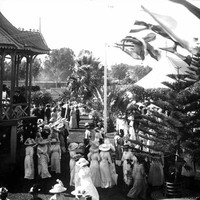
Image courtesy of the State Library of South Australia SLSA: PRG 280/1/6/16 , No known copyright restrictions
Events: Aboriginal
Images

Courtesy of The State Library of South Australia SLSA: B70641, Permission to publish required
Events: Connections with Asia
Images

Image courtesy of the State Library of South Australia, SLSA: B72188, Permission to publish required
Events: War and Peace
Images

Image courtesy of the State Library of South Australia SLSA: PRG 280/1/15/555, No known copyright restrictions

Image courtesy of the State Library of South Australia SLSA: PRG 280/1/28/94, No known copyright restrictions
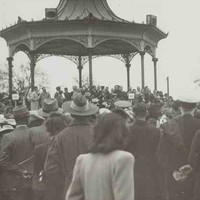
Courtesy of The State Library of South Australia SLSA: PRG 287/1/12/104, Permission to publish required
Sir Edwin Smith Kiosk
Images

Image courtesy of the State Library of South Australia SLSA: PRG 280/1/11/237, No known copyright restrictions
The Park and Rotunda
Images

Image courtesy of the State Library of South Australia SLSA: B 2840, No known copyright restrictions.

Image courtesy of the State Library of South Australia SLSA: B 3124, No known copyright restrictions
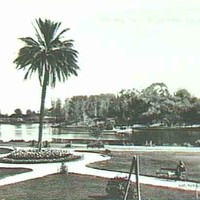
Image courtesy of the State Library of South Australia SLSA: B 43682, No known copyright restrictions

Image courtesy of the State Library of South Australia SLSA: B 4511, No known copyright restrictions
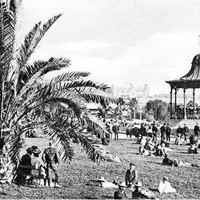
Image courtesy of the State Library of South Australia, SLSA: B 55421, No known copyright restrictions

Image courtesy of the State Library of South Australia SLSA: B 61020/133, No known copyright restrictions

Image courtesy of the State Library of South Australia SLSA: B 7798/129, No known copyright restrictions
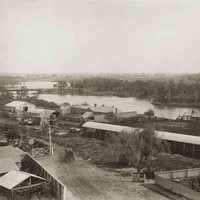
Image courtesy of the State Library of South Australia SLSA: B 9126, No known copyright restrictions

Image courtesy of the State Library of South Australia SLSA: B 9274, No known copyright restrictions

Image courtesy of the State Library of South Australia SLSA: PRG 280/1/15/999, No known copyright restrictions






CommentAdd new comment
Quickly, it's still quiet here; be the first to have your say!